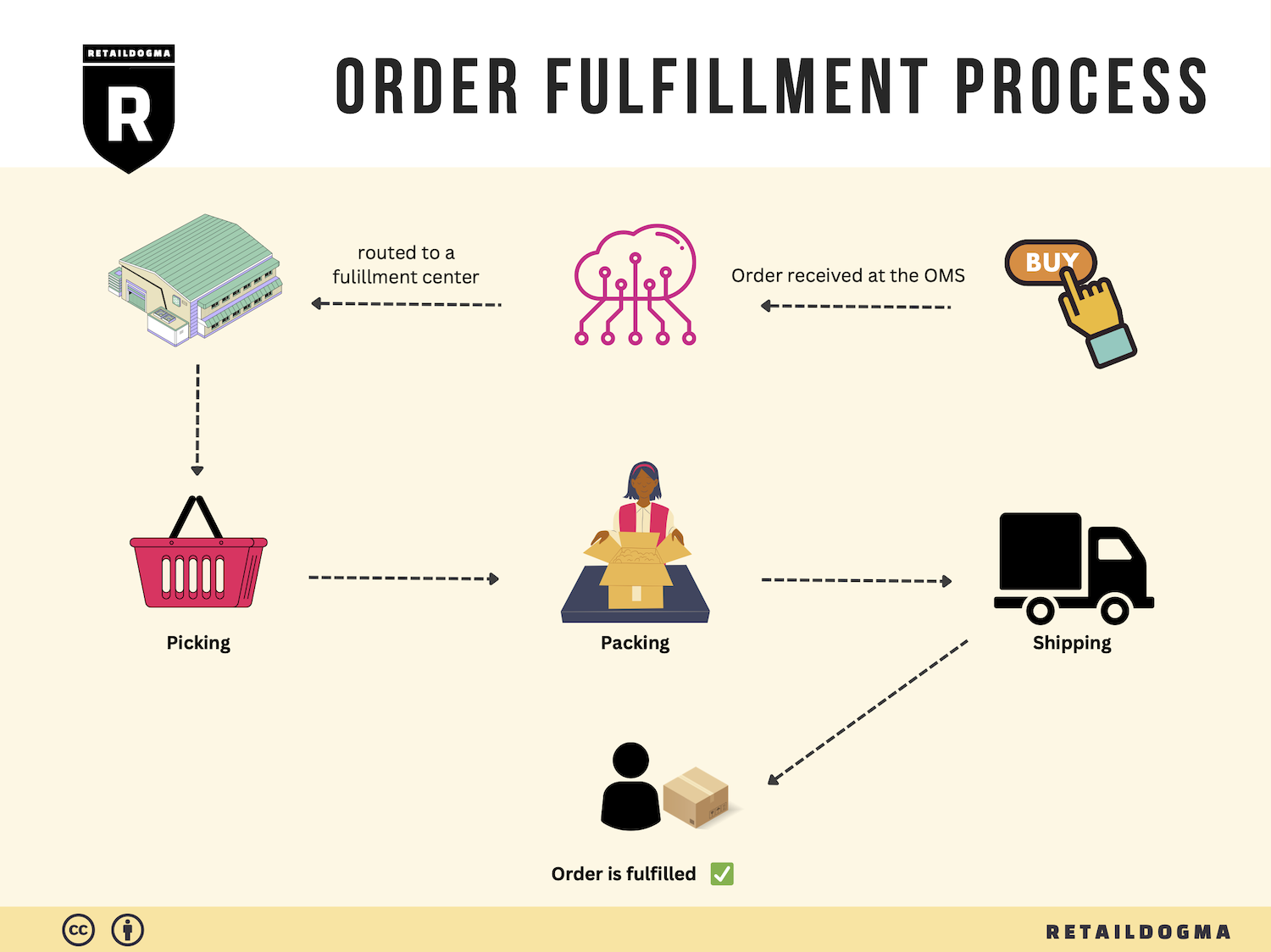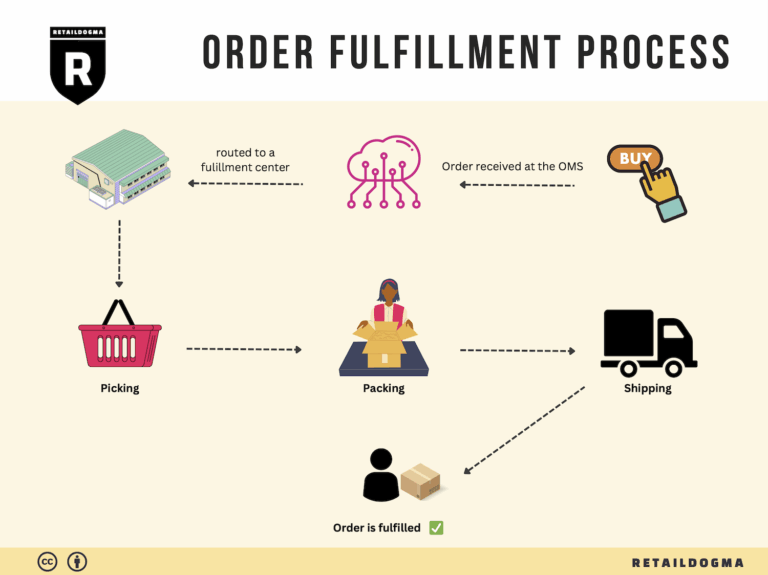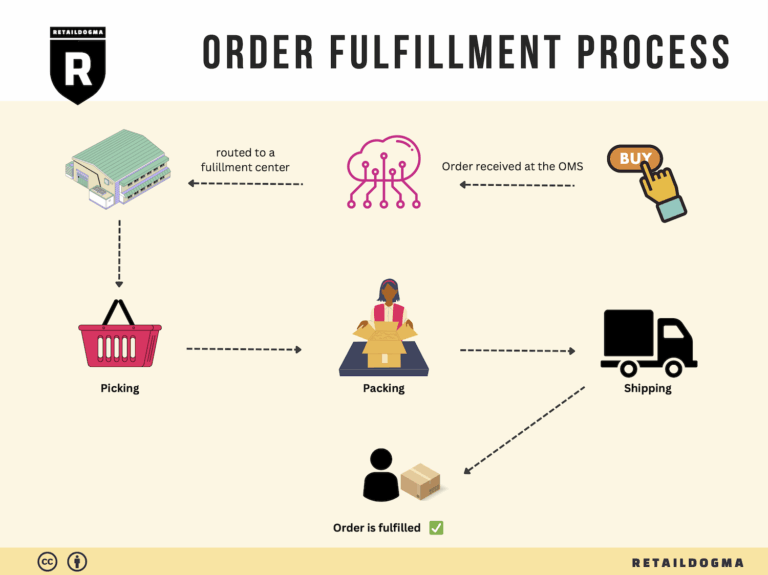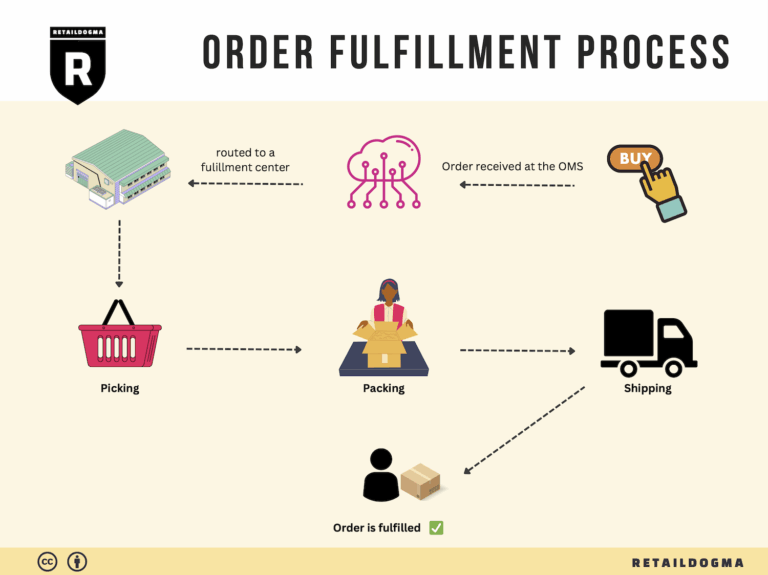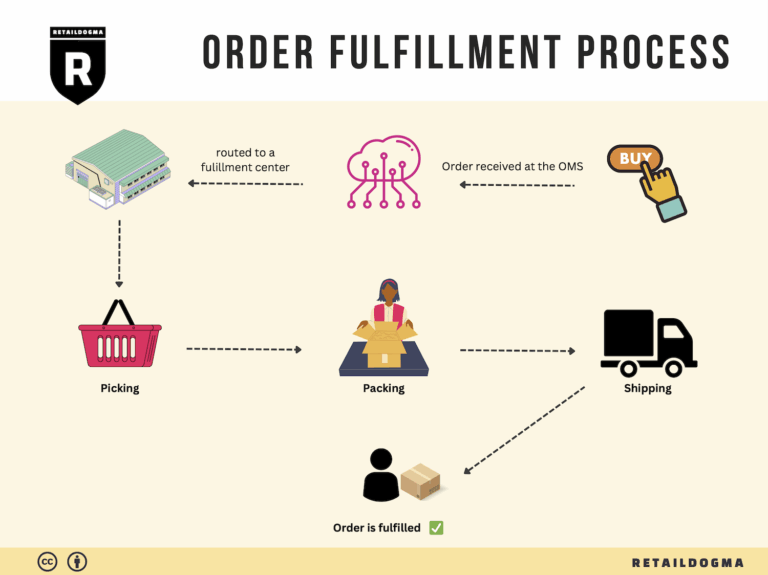What Is A Fulfillment Center? A Complete Guide (2025)
What is E-commerce Fulfillment? An Introduction for Growing Businesses
Running a growing online business can be exhilarating, but it often comes with its own set of challenges—none more daunting than the logistics of packing and shipping orders. As your sales increase, so does the complexity of fulfilling those orders. Many business owners find themselves overwhelmed by the intricacies of managing inventory, ensuring timely deliveries, and dealing with returns. This is where effective e-commerce fulfillment comes into play.
Fulfillment, in its simplest terms, is the process of getting a product from your warehouse to your customer’s doorstep. It encompasses everything from order processing and inventory management to packaging and shipping. For many businesses, especially those looking to scale, understanding and optimizing this process is crucial for maintaining customer satisfaction and profitability.
This guide aims to demystify e-commerce fulfillment for businesses eager to streamline their operations and enhance their customer experience. We’ll explore various fulfillment models, including Third-Party Logistics (3PL) and Fulfillment by Amazon (FBA), to help you determine which is the best fit for your needs. Each model offers unique advantages, and understanding these can empower you to make informed decisions about your logistics strategy.
In addition to fulfillment models, we will cover the core services integral to successful fulfillment operations, such as inventory management, order processing, and shipping logistics. These elements are vital for ensuring that you not only meet customer expectations but also build a sustainable and efficient fulfillment system.
Choosing the right fulfillment partner can make or break your operations. This guide will provide insights into what to look for when evaluating potential partners, including their technology capabilities, service offerings, and pricing structures. Understanding these factors will help you select a partner that aligns with your business goals and can scale alongside your growth.
Finally, we will delve into pricing considerations, highlighting how to evaluate costs associated with different fulfillment options. By equipping yourself with this knowledge, you can make strategic decisions that drive efficiency and enhance your bottom line.
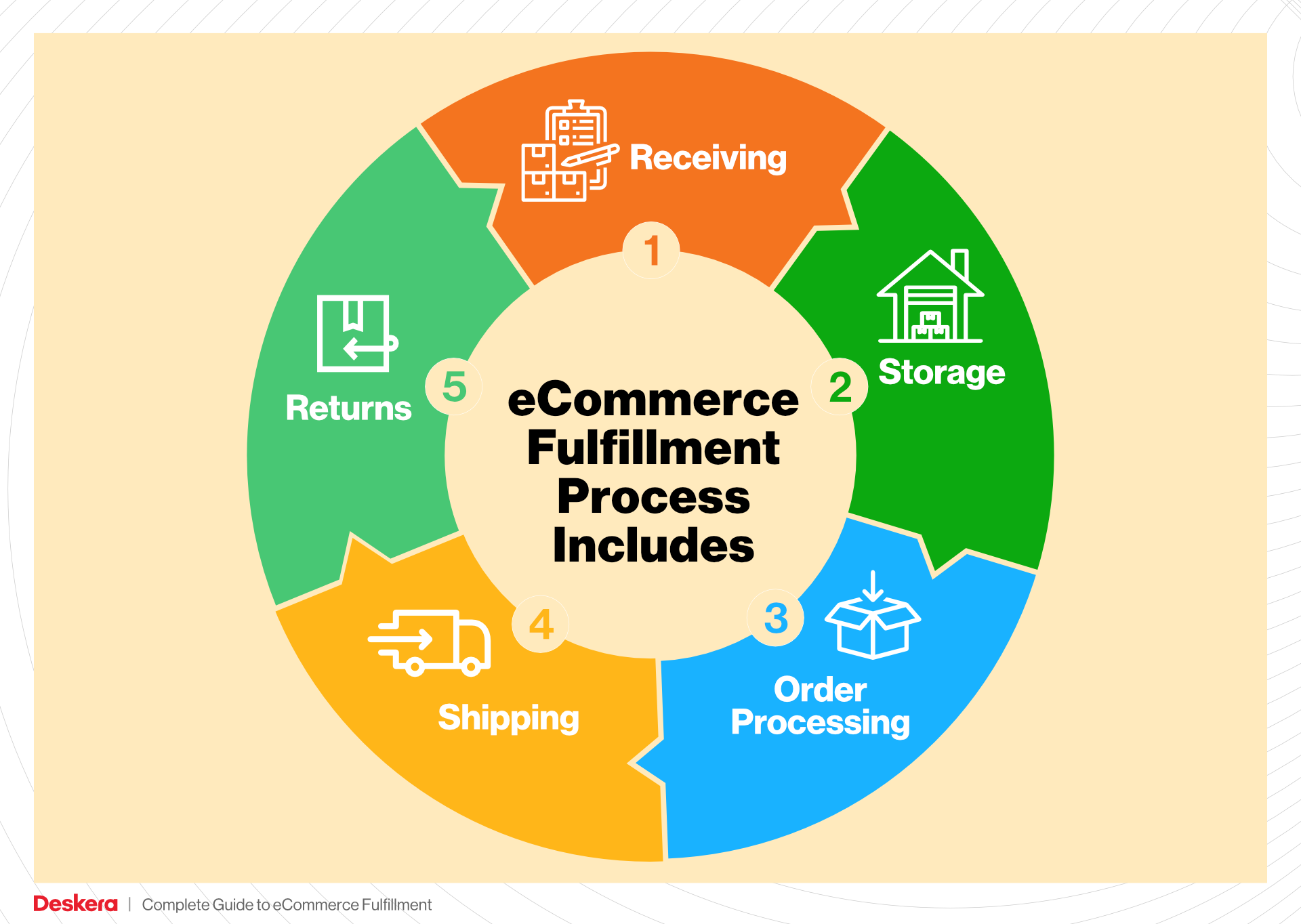
Our goal is to empower you with the insights needed to navigate the complexities of e-commerce fulfillment confidently. Whether you’re just starting to explore your options or looking to optimize an existing process, this guide will serve as a valuable resource for your logistics journey.
What You’ll Learn In This Guide
- What is E-commerce Fulfillment? An Introduction for Growing Businesses
- The Order Fulfillment Process: From ‘Buy’ Button to Customer’s Door
- Comparing Fulfillment Models: In-House vs. 3PL vs. Dropshipping
- A Deep Dive into Amazon FBA: Pros, Cons, and Who It’s For
- Core Services Offered by Fulfillment Centers
- How to Choose a Fulfillment Partner: A 6-Point Checklist
- Understanding Fulfillment Pricing: A Breakdown of Common Fees
- Frequently Asked Questions (FAQs) about Fulfillment
- Conclusion: Is Outsourcing Fulfillment the Right Move for Your Business?
- Important Disclaimer
The Order Fulfillment Process: From ‘Buy’ Button to Customer’s Door
1. Receiving Inventory
The order fulfillment process begins with receiving inventory from manufacturers or suppliers. This step is crucial as it establishes the foundation of your stock management. During this phase, businesses inspect shipments for quality and accuracy, ensuring that the received goods match the purchase orders.
Importance: A well-managed receiving process helps prevent discrepancies, reduces returns, and ensures that products are available for customer orders. Efficient receiving can also minimize delays in the fulfillment cycle.
Key Term: SKU (Stock Keeping Unit) – Each product is assigned a unique SKU, which aids in tracking inventory levels and managing stock across various sales channels.
2. Warehouse Storage
Once inventory is received and verified, it is stored in the warehouse. Effective warehousing involves organizing products in a manner that optimizes space and facilitates easy access. This may include categorizing items by type, size, or sales frequency.
Importance: Proper warehouse storage enhances operational efficiency. When items are strategically placed, it reduces the time taken to locate products, ultimately speeding up the order fulfillment process. This step is also essential for maintaining accurate inventory counts and minimizing the risk of stockouts.
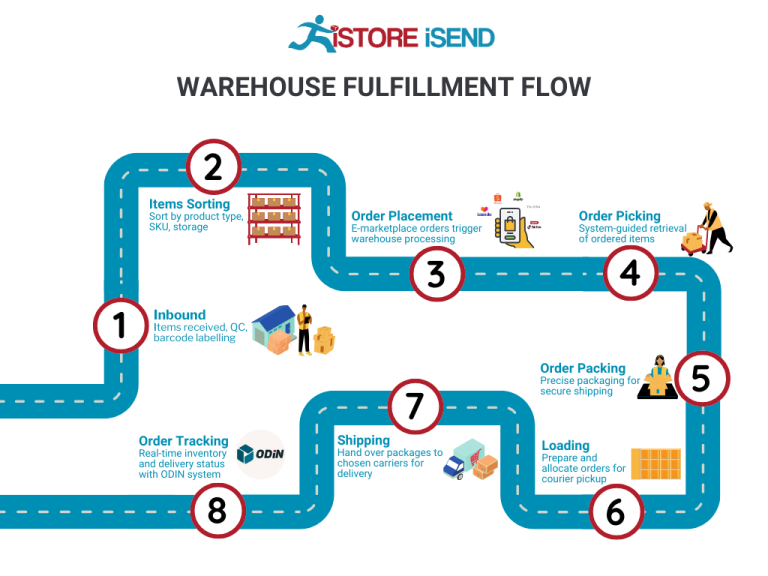
Key Term: FIFO (First In, First Out) – This inventory management technique ensures that older stock is sold before newer stock, helping to reduce waste and manage expiration dates for perishable goods.
3. Order Picking
Order picking is the process of retrieving items from the warehouse to fulfill customer orders. Once an order is placed, a pick list is generated, detailing the specific items and quantities needed. Warehouse staff use this list to gather products efficiently.
Importance: Accurate order picking is critical to customer satisfaction. Errors in this step can lead to incorrect shipments, resulting in returns and dissatisfied customers. Utilizing technology, such as barcode scanners or mobile picking devices, can further enhance accuracy and speed.
Key Term: Pick Lists – These documents or digital tools outline the specific items that need to be collected for each order, helping warehouse staff efficiently manage their time and resources.
4. Order Packing
After items have been picked, they must be packed for shipment. This involves selecting appropriate packaging materials, ensuring that items are secure and protected during transit, and including any necessary documentation, such as packing slips or return instructions.
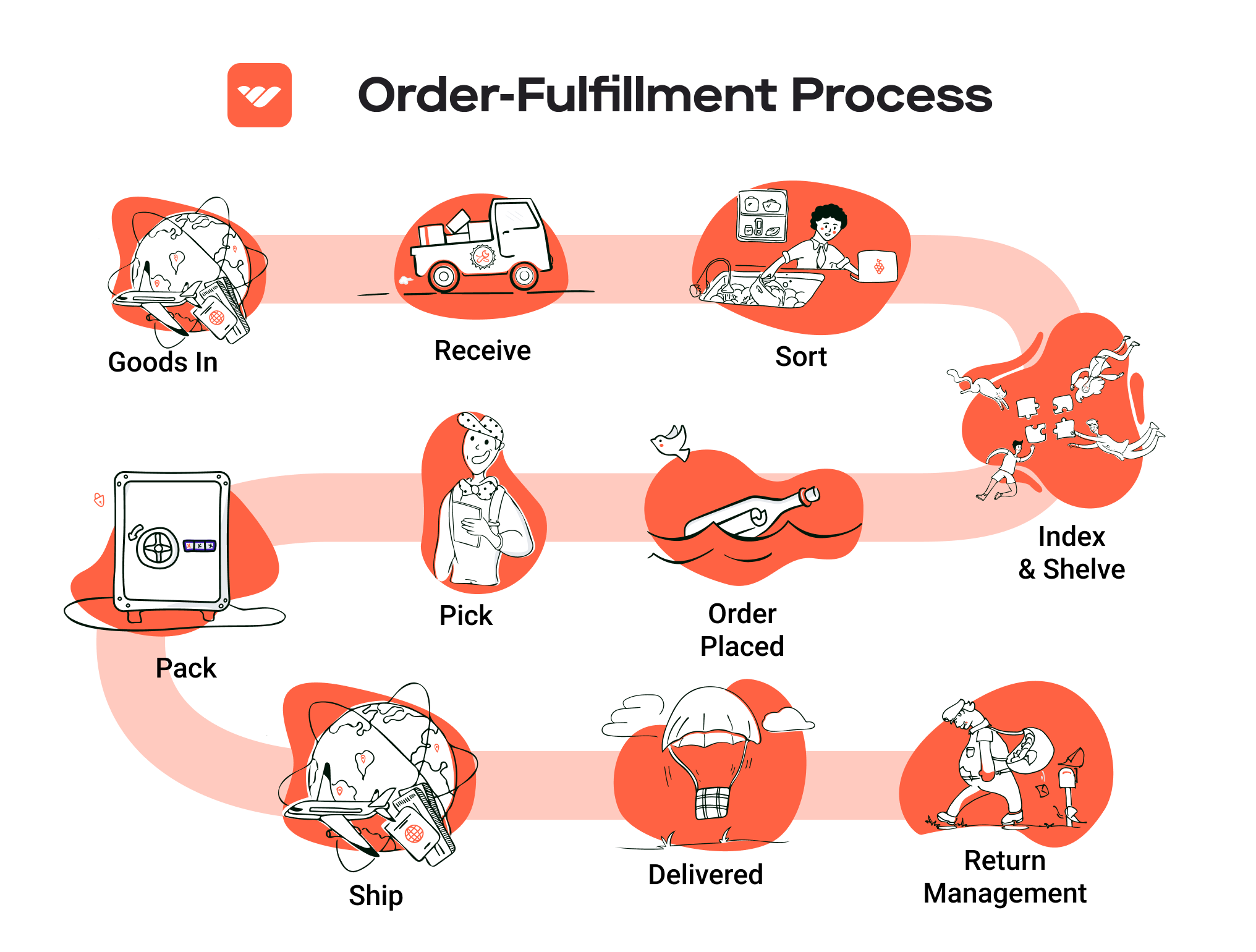
Importance: Proper packing is essential for preventing damage during shipping and ensuring that customers receive their orders in good condition. Additionally, branded packaging can enhance the customer experience and reinforce brand identity.
Key Term: Packaging Materials – These include boxes, bubble wrap, and fillers that protect products during shipping. Choosing the right materials can also influence shipping costs and sustainability efforts.
5. Shipping & Delivery
The final step in the fulfillment process is shipping and delivery. This involves selecting the best shipping carriers, generating shipping labels, and tracking shipments to ensure timely delivery to customers. Businesses must also provide customers with tracking information for transparency.
Importance: Efficient shipping and delivery are critical for maintaining customer satisfaction and loyalty. Timely deliveries can enhance the overall customer experience and encourage repeat business. Additionally, businesses must consider shipping costs and delivery times when choosing carriers to balance speed and affordability.
Key Term: Last-Mile Delivery – This term refers to the final leg of the delivery process, where the product is transported from a distribution center to the customer’s doorstep. Optimizing last-mile delivery is essential for improving customer satisfaction and reducing shipping costs.
Conclusion
Each of these five steps in the order fulfillment process plays a vital role in ensuring that products are delivered from the moment a customer clicks the ‘buy’ button to when they receive their order at their door. By focusing on efficiency and accuracy at each stage, businesses can improve their fulfillment operations, enhance customer satisfaction, and scale effectively in the competitive e-commerce landscape.
Comparing Fulfillment Models: In-House vs. 3PL vs. Dropshipping
Fulfillment Model Comparison
| Model | Who Handles Inventory | Best For (Business Stage) | Key Advantage | Key Disadvantage |
|---|---|---|---|---|
| In-House Fulfillment | The business itself | Established businesses with resources | Complete control over the fulfillment process | High overhead costs and resource-intensive |
| Third-Party Logistics (3PL) | 3PL provider handles inventory | Growing businesses seeking scalability | Cost-effective and access to logistics expertise | Less control over the fulfillment process |
| Dropshipping | Supplier handles inventory | Startups or businesses testing markets | Low startup costs and minimal inventory risk | Limited control over shipping and customer experience |
In-House Fulfillment
In-house fulfillment refers to a model where the business manages its own warehousing, inventory management, order processing, and shipping operations. This approach is typically adopted by established businesses that have the resources to invest in infrastructure and personnel. The key advantage of in-house fulfillment is the complete control it affords over the entire process. Businesses can ensure that their brand’s image and customer experience align with their objectives, leading to a more personalized service. Additionally, managing fulfillment internally allows for greater flexibility in inventory management and quicker response times to changes in demand. However, this model comes with significant challenges. The costs associated with maintaining a warehouse, hiring staff, and implementing technology solutions can be substantial, making it a resource-intensive option. Moreover, businesses may find themselves overwhelmed by the complexities of logistics, especially during peak seasons or as they scale.
Third-Party Logistics (3PL)
Third-party logistics (3PL) providers specialize in managing various aspects of the supply chain, including warehousing, inventory management, order processing, and shipping. This model is particularly advantageous for growing businesses that seek to scale efficiently without the burden of managing logistics in-house. By partnering with a 3PL, businesses can leverage the provider’s expertise and established infrastructure, resulting in cost-effective solutions and improved operational efficiency. The primary advantage of using a 3PL is the ability to focus on core business functions while outsourcing logistics to specialists who can optimize the fulfillment process. However, there are downsides to consider. Businesses may experience reduced control over the fulfillment process, which can lead to inconsistencies in customer experience if the 3PL does not align with the brand’s standards. Additionally, reliance on an external provider introduces risks associated with vendor performance and potential disruptions in service.
Dropshipping
Dropshipping is a fulfillment model where the retailer does not hold inventory but instead relies on suppliers to ship products directly to customers. This model is especially appealing for startups or businesses looking to test new markets without significant upfront investment. The key advantage of dropshipping is the low barrier to entry; businesses can start selling products without the need for inventory or warehousing, thus minimizing financial risk. Additionally, dropshipping allows for a broad product selection, enabling businesses to experiment with various offerings without the commitment of stock. However, this model comes with notable disadvantages. The retailer has limited control over the shipping process and customer experience, as these are managed by the supplier. This can lead to issues such as longer shipping times, stockouts, and potential discrepancies in product quality. Furthermore, businesses may face challenges in managing returns and customer service, as they do not handle the products directly. As a result, while dropshipping can be a low-cost entry point, it may not be sustainable for businesses seeking to build a strong brand identity and customer loyalty.
In summary, each fulfillment model—In-House, 3PL, and Dropshipping—offers unique advantages and challenges. Businesses must carefully consider their current stage, resources, and long-term goals when selecting the most suitable fulfillment strategy.
A Deep Dive into Amazon FBA: Pros, Cons, and Who It’s For
Understanding Fulfillment by Amazon (FBA)
Fulfillment by Amazon (FBA) is a service that allows e-commerce sellers to store their products in Amazon’s fulfillment centers. Amazon then takes care of storage, packaging, and shipping, as well as customer service and returns. This service is especially appealing for businesses looking to leverage Amazon’s vast logistics network and customer base.
How FBA Works
-
Sign Up for FBA: Sellers need to create an Amazon Seller account and opt for FBA. This process includes setting up shipping plans for their products.
-
Send Inventory to Amazon: Once registered, sellers ship their products to Amazon’s designated fulfillment centers. Amazon provides specific guidelines on how to package and label items.
-
Storage and Management: Once products arrive at the fulfillment centers, they are stored until sold. Amazon manages the inventory levels and keeps track of stock.
-
Order Fulfillment: When a customer orders a product, Amazon picks, packs, and ships it on behalf of the seller. This includes handling all aspects of shipping, including tracking and delivery.
-
Customer Service: Amazon manages all customer inquiries, returns, and refunds related to FBA products, providing a seamless experience for both sellers and customers.
-
Payment: After an order is fulfilled, Amazon deposits the sale proceeds into the seller’s account, minus applicable fees.
Pros of Using FBA
1. Prime Eligibility
One of the most significant advantages of FBA is that products become eligible for Amazon Prime. This means that millions of Prime members can receive items with free two-day shipping, which can significantly boost sales and visibility.
2. Customer Trust
Amazon is a trusted brand, and by using FBA, sellers can leverage this trust. Customers often feel more comfortable purchasing products fulfilled by Amazon due to their reputation for reliability and customer service.
3. Multi-Channel Fulfillment
FBA isn’t limited to Amazon sales. Sellers can also use FBA to fulfill orders from their own websites or other sales channels, streamlining operations and inventory management across platforms.
4. Scalability
FBA allows sellers to scale their business without worrying about logistics. As sales increase, Amazon can handle the rise in order volume without requiring sellers to invest in additional resources or infrastructure.
5. Efficient Logistics
With FBA, sellers benefit from Amazon’s sophisticated logistics network. This includes advanced technology for inventory management, shipping, and tracking, which can lead to faster delivery times and improved customer satisfaction.
Cons of Using FBA
1. High Fees
FBA comes with various fees that can add up quickly. These include storage fees for inventory stored in Amazon’s warehouses and fulfillment fees for each order processed. For smaller sellers or those with lower margins, these costs can significantly impact profitability.
2. Strict Inventory Rules
Amazon has strict guidelines regarding inventory management. Sellers must adhere to these rules to avoid penalties, including the potential for excess inventory fees if items remain unsold for too long.
3. Commingling Risks
FBA allows for commingling of inventory, meaning that multiple sellers’ products can be stored together. While this can streamline the fulfillment process, it poses risks. If a customer receives a defective or incorrect product, it may be challenging for the seller to resolve the issue, and it could negatively impact their seller rating.
4. Limited Control Over Branding
While FBA provides an efficient fulfillment process, sellers have limited control over the packaging and branding of their products. Items are shipped in Amazon-branded boxes, which can dilute brand identity.
5. Dependency on Amazon
Relying heavily on FBA can create dependency on Amazon’s platform. Changes in Amazon’s policies, fees, or algorithms can directly affect a seller’s business, making it crucial to stay agile and informed.
Who is FBA Best For?
Fulfillment by Amazon is ideal for:
-
E-commerce Entrepreneurs: Those looking to quickly scale their business without investing heavily in logistics infrastructure can benefit from FBA’s streamlined fulfillment process.
-
Small to Medium-Sized Businesses: Sellers with limited resources for warehousing and shipping can leverage FBA to reach a broader audience without the overhead costs of managing logistics themselves.
-
Brands Seeking to Increase Visibility: Companies wanting to tap into Amazon’s vast customer base and gain Prime eligibility will find FBA an attractive option for increasing sales.
-
Multi-Channel Sellers: Businesses selling on multiple platforms who want a consistent fulfillment solution can utilize FBA for both Amazon and non-Amazon orders.
-
Seasonal Sellers: Brands that experience fluctuating sales patterns can take advantage of FBA’s scalability, allowing them to manage inventory levels without the need for long-term commitments.
In conclusion, FBA offers a powerful fulfillment solution for e-commerce businesses looking to streamline operations, enhance customer trust, and increase sales. However, it’s essential to weigh the associated costs and limitations against the benefits to determine if it aligns with your business goals.
Core Services Offered by Fulfillment Centers
Inventory Management & Warehousing
Inventory management and warehousing form the backbone of a successful fulfillment operation. Fulfillment centers employ sophisticated inventory management systems that allow businesses to keep track of stock levels in real-time. This ensures that products are available when customers place orders, minimizing the risk of stockouts and backorders.
The benefits of effective inventory management are manifold:
- Real-time Visibility: Businesses gain insights into stock levels, enabling them to make informed decisions about reordering and production.
- Reduced Holding Costs: By optimizing stock levels, fulfillment centers help businesses minimize the costs associated with overstocking, such as warehousing fees and depreciation of unsold goods.
- Streamlined Operations: Efficient warehousing practices, including layout optimization and inventory categorization, enhance the speed and accuracy of order fulfillment, leading to faster shipping times.
By leveraging advanced inventory management and warehousing solutions, e-commerce businesses can better align their inventory with customer demand, ultimately improving service levels and customer satisfaction.
Pick and Pack Services
Pick and pack services are crucial for fulfilling individual customer orders efficiently. This process involves selecting the right products from the warehouse (picking) and packaging them appropriately for shipment (packing). Fulfillment centers utilize technology such as barcode scanning and automated systems to ensure accuracy and efficiency in this process.
Key benefits of pick and pack services include:
- Accuracy: Automated systems reduce human error, ensuring that customers receive the correct items and quantities, which is essential for maintaining trust and satisfaction.
- Speed: With optimized picking routes and packing processes, fulfillment centers can significantly reduce the time it takes to process orders, leading to quicker shipping and enhanced customer experiences.
- Customization: Fulfillment centers can accommodate specific packaging requirements, such as branded packaging or special handling instructions, allowing businesses to maintain their brand image and meet unique customer needs.
By outsourcing pick and pack services, e-commerce businesses can focus on marketing and product development while ensuring that orders are fulfilled efficiently and accurately.
Kitting and Assembly
Kitting and assembly services involve the grouping of multiple products into a single package, which is especially useful for businesses that sell bundled products or kits. This service can also include assembling products that require some level of assembly before shipping. Fulfillment centers often have the facilities and expertise to handle these tasks.
The advantages of kitting and assembly services are:
- Increased Sales Opportunities: Businesses can offer bundled products or kits, which can enhance average order value and improve customer satisfaction by providing a complete solution.
- Efficiency: By having fulfillment centers handle the assembly and kitting, businesses can streamline their operations and reduce the complexity of managing multiple SKUs.
- Enhanced Customer Experience: Providing pre-assembled kits ensures that customers receive everything they need in one package, reducing the hassle of dealing with multiple shipments.
For e-commerce businesses looking to differentiate themselves in a competitive marketplace, kitting and assembly services can be a valuable strategy for improving product offerings and customer satisfaction.
Returns Management (Reverse Logistics)
Returns management, often referred to as reverse logistics, is a critical component of the fulfillment process that can significantly impact customer satisfaction and retention. Fulfillment centers provide systems and processes for handling returns efficiently, ensuring that customers have a seamless experience when returning products.
The benefits of effective returns management include:
- Customer Satisfaction: A hassle-free returns process enhances customer trust and loyalty, as customers are more likely to make purchases if they know they can easily return items if needed.
- Operational Efficiency: Fulfillment centers can streamline the return process by quickly assessing returned items, restocking them as necessary, and managing the logistics of returns, thereby reducing operational costs.
- Data Insights: Analyzing return data allows businesses to identify trends and issues with products, enabling them to make informed decisions about inventory management, product quality, and customer preferences.
By partnering with fulfillment centers that specialize in returns management, e-commerce businesses can turn a potentially negative experience into an opportunity for improving customer relationships and enhancing overall operational efficiency.
In conclusion, leveraging the core services offered by fulfillment centers—inventory management & warehousing, pick and pack services, kitting and assembly, and returns management—can help e-commerce businesses streamline their operations, improve customer satisfaction, and ultimately scale their operations effectively.
How to Choose a Fulfillment Partner: A 6-Point Checklist
Location & Warehouse Network
Importance: The location of your fulfillment partner’s warehouses can significantly impact shipping costs and delivery times. A strategically located warehouse network allows for faster shipping to your customer base, which enhances customer satisfaction.
Questions to Ask:
– Where are your warehouses located, and how does that align with our primary customer demographics?
– Do you have multiple locations, and how do you optimize shipping routes from these warehouses?
– What shipping carriers do you work with, and how do you handle last-mile delivery?
Technology & Integrations
Importance: The technology infrastructure of a fulfillment partner is crucial for seamless operations. A robust fulfillment system integrates with your e-commerce platform, inventory management software, and customer relationship management (CRM) tools, ensuring real-time data flow and operational efficiency.
Questions to Ask:
– What technology platforms do you use for order processing, inventory management, and shipping?
– Can your systems integrate with our existing e-commerce platform (e.g., Shopify, WooCommerce)?
– Do you provide real-time tracking capabilities for both us and our customers? How does that work?
Specializations (e.g., cold storage, oversized items)
Importance: Not all fulfillment centers are equipped to handle specific product types. If your business deals with unique items—such as perishables, oversized products, or hazardous materials—it’s vital to choose a partner with the necessary capabilities and certifications.
Questions to Ask:
– What types of products are you specialized in handling, and do you have the necessary equipment and facilities?
– Are you equipped for specialized storage needs, such as temperature-controlled environments or oversized inventory?
– What certifications and compliance measures do you have in place for handling specific product categories?
Scalability & Capacity
Importance: As your business grows, your fulfillment needs will evolve. A suitable partner should be able to scale with your business, whether that involves increasing order volume, expanding into new markets, or adding new product lines.
Questions to Ask:
– How do you handle peak seasons or unexpected surges in demand?
– What is your maximum order capacity, and how do you plan to accommodate future growth?
– Can you provide case studies or examples of how you’ve successfully scaled with other clients?
Pricing and Contracts
Importance: Understanding the pricing structure and contract terms is essential to ensure that your partnership remains financially viable. Hidden fees and unfavorable contract terms can quickly eat into your profit margins.
Questions to Ask:
– Can you provide a detailed breakdown of your pricing structure, including any additional fees (e.g., storage, handling, shipping)?
– What are the terms of the contract? Is there flexibility for renegotiation as our business evolves?
– How do you handle pricing adjustments due to changes in shipping rates or other operational costs?
Customer Support & Reviews
Importance: Effective customer support can make or break a fulfillment partnership. A responsive support team ensures that any issues are addressed promptly, minimizing disruptions to your operations. Additionally, examining reviews and testimonials can provide insights into the partner’s reliability and performance.
Questions to Ask:
– What support channels do you offer (e.g., phone, email, chat), and what are your response times?
– Can you provide references or case studies from other clients in our industry?
– How do you handle disputes or issues that arise during the fulfillment process, and what is your track record for resolving these problems?
Conclusion
Choosing the right fulfillment partner is a critical decision that can significantly impact your e-commerce business’s growth and customer satisfaction. By using this checklist, you can evaluate potential partners based on key factors that align with your operational needs and business goals. Take the time to ask the right questions, assess their capabilities, and ensure that they can support your business as it scales.
Understanding Fulfillment Pricing: A Breakdown of Common Fees
Initial Setup Fees
When partnering with a fulfillment center, businesses often encounter initial setup fees. These are one-time charges associated with establishing your account and integrating your systems with the fulfillment provider’s infrastructure. The setup process may include creating product SKUs, configuring software systems, and setting up inventory management protocols.
These fees can vary significantly based on the complexity of your operations and the provider’s requirements. Some fulfillment centers may offer a flat fee for setup, while others charge based on the number of products or the time it takes to complete the integration. To minimize these costs, it’s advisable to provide comprehensive product information and be prepared for a streamlined onboarding process.
Receiving Fees
Receiving fees are charged when inventory arrives at the fulfillment center. This fee covers the labor and resources necessary for unloading, inspecting, and shelving your products. The calculation for receiving fees can depend on several factors, including:
- Volume of Inventory: Larger shipments may incur higher fees due to the increased handling time and labor required.
- Product Type: Certain products may require special handling, which can affect the fee structure. For instance, fragile or oversized items may incur additional costs.
- Frequency of Shipments: Regular, predictable shipments may qualify for negotiated rates, reducing overall costs.
To reduce receiving fees, maintain consistent shipment schedules and ensure that your products are packaged efficiently for quick handling.
Storage Fees (per pallet/bin)
Storage fees are recurring charges for the space your inventory occupies within the fulfillment center. These fees can be calculated on a per-pallet or per-bin basis, depending on how the fulfillment center organizes its storage. Factors that influence storage fees include:
- Size and Weight of Products: Larger or heavier items may require more space and incur higher fees.
- Inventory Turnover Rate: High-turnover items may qualify for lower storage fees, as they are frequently moved in and out, while slow-moving products can lead to higher costs.
- Seasonality: Some fulfillment centers may have fluctuating rates based on seasonal demand, particularly during peak shopping seasons.
To effectively manage storage fees, monitor your inventory turnover and consider utilizing just-in-time inventory practices to minimize excess stock.
Pick & Pack Fees (per item/order)
Pick and pack fees are incurred each time an order is processed. This fee covers the labor involved in selecting items from inventory (picking) and preparing them for shipment (packing). The calculation for pick and pack fees generally depends on:
- Number of Items per Order: Most fulfillment centers charge a base fee plus an additional charge for each item picked and packed. Bulk orders may lead to lower per-item costs.
- Complexity of Packing: Special requirements, such as custom packaging or labeling, can increase these fees.
- Frequency of Orders: Consistent order patterns may allow for negotiated rates, reducing overall costs.
To optimize pick and pack fees, consider consolidating orders to minimize the number of individual shipments and simplify packing requirements.
Shipping Fees
Shipping fees encompass the costs associated with transporting products to customers. These fees can vary based on several factors, including:
- Shipping Carrier: Different carriers have different rates, so choosing the right one based on your delivery needs can help reduce costs.
- Shipping Method: Options like standard, expedited, or same-day delivery come with varying price tags. Understanding your customers’ preferences can help you strike a balance between cost and service level.
- Destination: Shipping costs can vary significantly based on the distance to the delivery location. Consider whether regional distribution centers can help minimize these costs.
To ensure you are getting the best shipping rates, regularly review carrier contracts, and consider negotiating rates based on shipping volume.
Tips for Getting an Accurate Quote
-
Provide Detailed Information: Be specific about your product types, order volumes, and any special handling requirements. The more information you provide, the more accurate the quote will be.
-
Request Multiple Quotes: Compare pricing from different fulfillment centers to identify the best fit for your business needs. Look beyond just costs; consider service levels, technology, and scalability.
-
Ask About Hidden Fees: Inquire about any potential hidden charges, such as for returns or inventory adjustments, to avoid surprises later on.
-
Negotiate Terms: Many fulfillment providers are open to negotiation, especially if you can commit to a certain volume of business. Leverage your potential order volume to secure better rates.
-
Review Regularly: Fulfillment costs can change, so make it a habit to review your fulfillment agreements periodically. This ensures that your pricing remains competitive and in line with your business growth.
By understanding and managing these common fulfillment fees, e-commerce businesses can optimize their logistics operations and ultimately enhance profitability while scaling their direct-to-consumer sales.
Frequently Asked Questions (FAQs) about Fulfillment
1. What is D2C fulfillment?
D2C fulfillment refers to the process of delivering products directly from a business to its end consumers, bypassing traditional retail channels. This model allows brands to have complete control over their supply chain, customer experience, and brand messaging.
2. How does D2C fulfillment differ from traditional eCommerce fulfillment?
While both involve selling products online, D2C fulfillment specifically focuses on direct sales to consumers without intermediaries. Traditional eCommerce fulfillment can include sales through third-party platforms or retailers, which may limit a brand’s control over the customer experience and brand perception.
3. What are the main benefits of adopting a D2C fulfillment model?
Key benefits include greater control over brand image, improved customer experience through personalized interactions, increased profit margins by eliminating retailer commissions, and valuable consumer insights for better product innovation and market testing.
4. Can any business implement a D2C fulfillment strategy?
Yes, any business can adopt a D2C fulfillment strategy, but it is particularly advantageous for brands that have unique products, strong brand identities, or a desire to cultivate direct relationships with their customers. However, businesses should consider their operational capabilities and market demand.
5. What challenges are associated with D2C fulfillment?
Common challenges include managing last-mile logistics to ensure timely deliveries, accurate inventory forecasting to avoid overstock or stockouts, handling returns efficiently, and implementing the necessary technology and infrastructure for seamless operations.
6. How can businesses measure the success of their D2C fulfillment efforts?
Success can be measured through key performance indicators (KPIs) such as order fulfillment accuracy, delivery times, customer satisfaction scores, return rates, and overall profitability. Analyzing customer feedback and repeat purchase rates can also provide insights into the effectiveness of the fulfillment strategy.
7. What is a 3PL, and how can it support D2C fulfillment?
A third-party logistics (3PL) provider is a specialized company that manages logistics and fulfillment services for businesses. 3PLs can help D2C brands by providing warehousing, inventory management, order processing, and shipping solutions, allowing businesses to focus on their core competencies while benefiting from logistics expertise.
8. How much do fulfillment services typically cost?
Fulfillment service costs can vary widely based on factors such as order volume, storage needs, shipping distances, and additional services like packaging or returns management. On average, businesses can expect to pay fees per order fulfilled, storage fees for inventory, and shipping costs, which can be optimized through strategic partnerships with carriers.
9. What’s the difference between a warehouse and a fulfillment center?
A warehouse is primarily used for storing goods, while a fulfillment center is specifically designed to efficiently process orders and ship products to customers. Fulfillment centers often incorporate advanced technology to streamline order processing, inventory management, and shipping, focusing on rapid order fulfillment.
10. What best practices can businesses follow to optimize their D2C fulfillment operations?
To optimize D2C fulfillment, businesses should invest in technology for real-time inventory and order management, offer multiple shipping options to meet customer preferences, maintain clear communication with customers about order status, and continuously analyze fulfillment performance to identify areas for improvement.
Conclusion: Is Outsourcing Fulfillment the Right Move for Your Business?
Assessing the Value of Outsourcing Fulfillment
Outsourcing fulfillment can be a transformative decision for e-commerce businesses looking to scale efficiently. One of the most significant benefits of partnering with a fulfillment service is the considerable time savings it offers. By delegating logistics, order processing, and shipping to experts, business owners can redirect their focus toward strategic growth initiatives, product development, and enhancing customer engagement.
Moreover, a fulfillment partner provides the scalability necessary to adapt to fluctuating demand. As your business grows, so do the complexities of order fulfillment. A reliable third-party logistics (3PL) provider can seamlessly accommodate increased order volumes without compromising service quality, allowing you to expand your reach and offerings without the burden of managing logistics in-house.
In addition to time and scalability, fulfillment services bring valuable expertise to the table. Their specialized knowledge in inventory management, shipping logistics, and customer service can significantly enhance your operational efficiency. This expertise not only improves your bottom line but also elevates the overall customer experience, fostering loyalty and repeat business.
However, the success of outsourcing fulfillment hinges on selecting the right partner. It’s essential to evaluate potential providers based on their technology capabilities, reliability, and alignment with your brand values. A well-chosen partner will not only support your current operations but will also be instrumental in driving your growth trajectory.
To determine if outsourcing fulfillment is the right move for your business, consider conducting a thorough audit of your current shipping processes. Assess areas where you face challenges, such as inventory management or delivery speed. This reflection will provide clarity on whether a fulfillment partner could enhance your efficiency and help you achieve your growth objectives. Embrace this opportunity to streamline your operations and position your business for success.
Important Disclaimer
⚠️ Important Disclaimer
The information in this guide is for educational purposes. Fulfillment services, pricing, and platform features change frequently. Always conduct your own due diligence and consult with providers directly before making business decisions.
